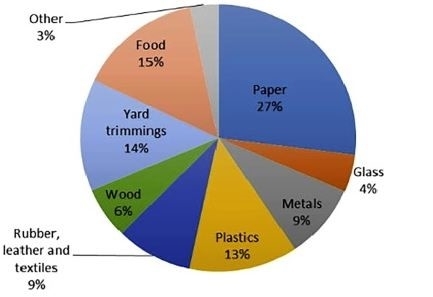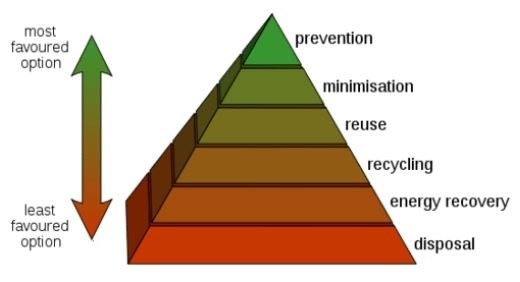Study Notes on Solid and Liquid Waste For UGC NET Exam 2022
By BYJU'S Exam Prep
Updated on: September 14th, 2023

UUGC NET Exam is conducted twice a year by NTA. There are ten units in Paper-1 and each unit has equal weightage in the examination. Most Important Topics in UGC NET Environment, Logical Reasoning, Teaching Aptitude, Research Aptitude, Communication, ICT, Higher Education.
Also, Register for Our Free Workshop on Career Scope After Qualifying UGC NET Exam.
Table of content
UGC NET Exam 2022 Your exam is about to held in the month of July & August 2022.
This article is part of Environment to cover the topic of Solid and Liquid Waste. We hope that you will sincerely study these notes and also attempt the question attached at the end of this article.
What is Solid and Liquid Waste?
Solid and Liquid wastes are produced by both animal and household sources and can altogether impair drinking, fertilization, recreational water, and other water sources in agricultural and municipal regions. Different issues of waste in over a significant period, environmental science, the general part of reusing, and materials restoration are determined.
- Waste is the outcast and defective product of life.
- The waste is just the issue when they occur in areas or in focuses that may antagonistically influence the standard of life of the occupants of that zone.
- The problem of the waste material increases based on the population in a particular country, and their degree of mobility decreases.
Source of Waste
In the following, we have mentioned the source of waste for solid and liquid separation in detail to understand it correctly-
Source of Solid Waste- Dumping of solid wastes is a stinging and extensive in both agricultural and urban regions in many developed and developing nations.
From the following pie chart, you will find the segregation of solid waste based on the composition and characterization of the material-

From the above diagram, the discrimination shows wastage of paper is high comparatively from the other sources used by the human and which is converted into the waste.
- Food Solid Waste- The solid waste of the food is described, such as- kitchen refuse, trash, swill, and so on. The food waste comes from residencies and industrial enterprises, including restaurants, supermarkets, and unfold stands, institutional cafeterias, and pantries.
- Disposal Solid Waste- Devising the poor route, shortage of knowledge concerning the mass program, the number of traffic for stable garbage accumulation and impoverished streets, and inadequate infrastructure are the solid wastes. The disposal of plastic waste is a major environmental problem.
- A massive amount of plastic waste generated every year from all over the world. Several Canals and drains as open places are widely used to dump varieties of garbage as a source of domestic organic and inorganic waste.
Source of Liquid Waste- The variety and composition of liquid waste depend on dump sources which converted into waste fluid comes from- household sources, industrial endowments, and manufacturers are the leading cause of the urban areas.
- The formation of liquid waste, also called wastewater, is exceptionally different and relies substantially upon its source.
- A few Canals and depletes as open places are generally used to dump collections of garbage as a source of domestic organic and inorganic waste.
- The liquid waste coming for the rotten food and the garbage from the industrial area in the form of fluid is harmful to humans as well as nature as it contains a variety of compound chemicals.
- Stormwater is also the form of liquid waste as the fluid waste coming from the commercial, residential, and manufacturing sectors, which poisoned with various types of pollutants such as- faecal matter, soil, litter, and oil from vehicles.
Impact on the Environment
The solid and liquid waste will create a severe negative impact on the environment. In the following points, we have mentioned the adverse effects of solid waste on the environment-
- Due to the open dumps of the solid waste the odour emitting from these dumps being affected nearby areas.
- The harmful gases are ceaselessly presented to the environment.
- The inadequacies of lab-based poisonousness tests are discussed, and techniques that are accessible for the quantitative assessment of marine networks are illustrated.
- The consequences of water waste will damage the living life directly and will affect animals and fishes etc. in Water and humans are also at considerable risk.
- The sources of the liquid waste directly damage the livings things inside the Water through various harmful gases and the liquids coming from the industries, commercial, and households.
- Penetrating rainwater through the open dump poisoning groundwater supplies.
Impact on Human Health
Ill-advised removal of waste can enormously influence the wellbeing of the populace living close by the contaminated zone or landfills. Squander removal laborers and different workers in these landfill facilities are at a more severe hazard.
Introduction to inappropriately took care of wastes can cause
- Skin irritation
- Blood diseases
- Respiratory issues
- Development issues
- Regenerative issues
- Low birth weight
- Neurological disease
- Nausea and vomiting
Waste Management Strategy
The Hierarchy of Waste Management in order or preference, beginning with prevention as the most favourable to disposal as the least desirable option are shown in the below figure-

- Recycling of waste products such as- glass, paper, plastics, wood, metals, etc. converted into the fabrication of new products that can use further.
- The less hazardous waste materials can manufacture again.
- The recovery of the plant-based wastes is frequently grown and reused as a mulch and fertilizer.
- The food-based oils are being utilized and retrieved in the form of “Biodiesel.”
- The organic wastes such as food waste, garden waste, and animal dung that consist of naturally degrading bacteria can occur transformed under controlled circumstances into compost, which can later be used as a natural fertilizer.
Now Attempt the questions given below and provide your answer in comment section.
Multiple Choice Questions (MCQ)
Ques 1- The simplest and most common method used in the cities is to collect and dump the waste in a ___.
(A) Landfill
(B) River
(C) Ocean
(D) Any of the above
Ques 2 – ____ can be produced from landfill waste.
(A) Natural gas
(B) Liquified petroleum gas
(C) Biogas
(D) Any of the above
Ques 3- What is right about Aerobic bacteria?
(A) Flourish in the presence of free oxygen
(B) Consume organic material as their food
(C) Oxidize organic material in sewage
(D) All the above
Ques 4 – The most severe environmental effect posed by hazardous wastes is _____?
(A) Air Pollution
(B) Contamination of groundwater
(C) Increased use of land for landfills
(D) None of these
Ques 5- Which of the integrated waste management practice reduces the waste generation on an individual level?
(A) Source Reduction
(B) Recycling
(C) Disposal
(D) Burning
Ques 6- Which gas produced in open dumps from the decomposition of biodegradable waste?
(A) Ethane
(B) Methane
(C) Propene
(D) None of these
Answer Key
Q1-A, Q2-C, Q3-D, Q4-B, Q5-A, Q6-B
Hope you guys now have a better understanding of the topic of Solid and Liquid Waste and this article will helps you in the preparation of UGC NET Paper 1 Exam. If you have any other queries, please comment.
Preparation Tips for upcoming UGC NET EXAM 2022
- Check the full syllabus and examination pattern of UGC NET EXAM thoroughly
- Start preparing for the exam with a time schedule
- Practise with the previous year’s question papers and their solution
- Keep revision of all topics from the topics on a daily basis
- Check your progress with mock tests
- Study carefully and do maintain your health.
Increase your chances to crack JRF by 900%-Join Online Classroom Program
Thank you,
Team BYJU’S Exam Prep
The Most Comprehensive Exam Prep App.


